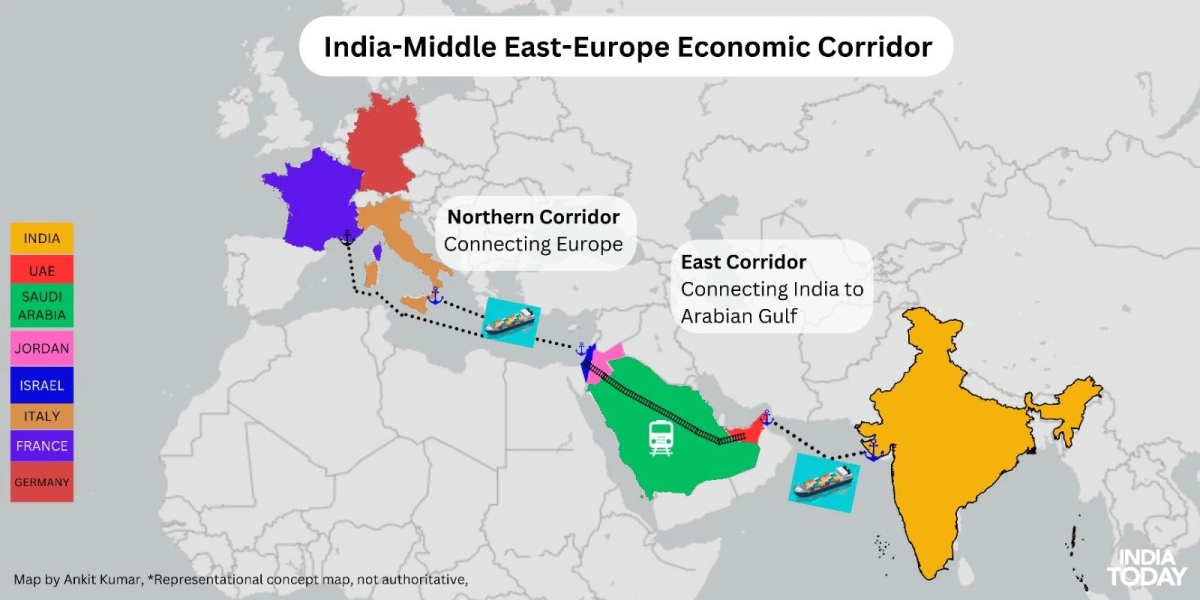G 20: Alternative zur Seidenstraße

Quelle: Times of India
Auf dem G 20 Gipfel in Indien wurde ein ambitioniertes neues Projekt vorgestellt, dass sowohl Indien als auch die Länder des Nahen Ostens gegenüber Russland und China stärken würde und etwa vom israelischen Premier Benjamin Netanjahu als "‘Greatest cooperation project in our history" in höchsten Tönen gelobt wurde:
A rail and ports deal linking the Middle East and South Asia was announced on Saturday on the sidelines of the G20 summit in New Delhi.
The US, Saudi Arabia, the EU, the UAE and other G20 partners agreed to explore a shipping corridor project to augment trade flows between Europe and India.
“This is a big deal,” US President Joe Biden said. “This is a really big deal.”
The corridor will help boost trade, deliver energy resources and improve digital connectivity.
The deal will benefit low and middle-income countries in the region, and enable a critical role for the Middle East in global commerce.
"India began the Sabang port in Indonesia, the multimodal project with Myanmar and Thailand, Sagarmala in India, and Chabahar in Iran, so this corridor is a natural outcome and provides a vision," Srikanth Kondapalli, professor in Chinese studies at Delhi’s Jawaharlal Nehru University, told The National.
"China's BRI has left in its wake debts in 16 countries including in this region with Sri Lanka, Pakistan and Kenya. India's spice route project thus becomes robust and with the Africa-Asia Growth Corridor with Indonesia and Japan, this becomes inclusive."
The move comes amid US efforts for a broader diplomatic deal in the Middle East that would have Saudi Arabia recognise Israel.
Indian Prime Minister Narendra Modi, European Commission President Ursula von der Leyen and other leaders from around the world participated in the announcement.
The corridor is aimed to link Middle East countries by railway and connect them to India by port, helping the flow of energy and trade from the Gulf to Europe, thereby cutting shipping times, costs and fuel use.